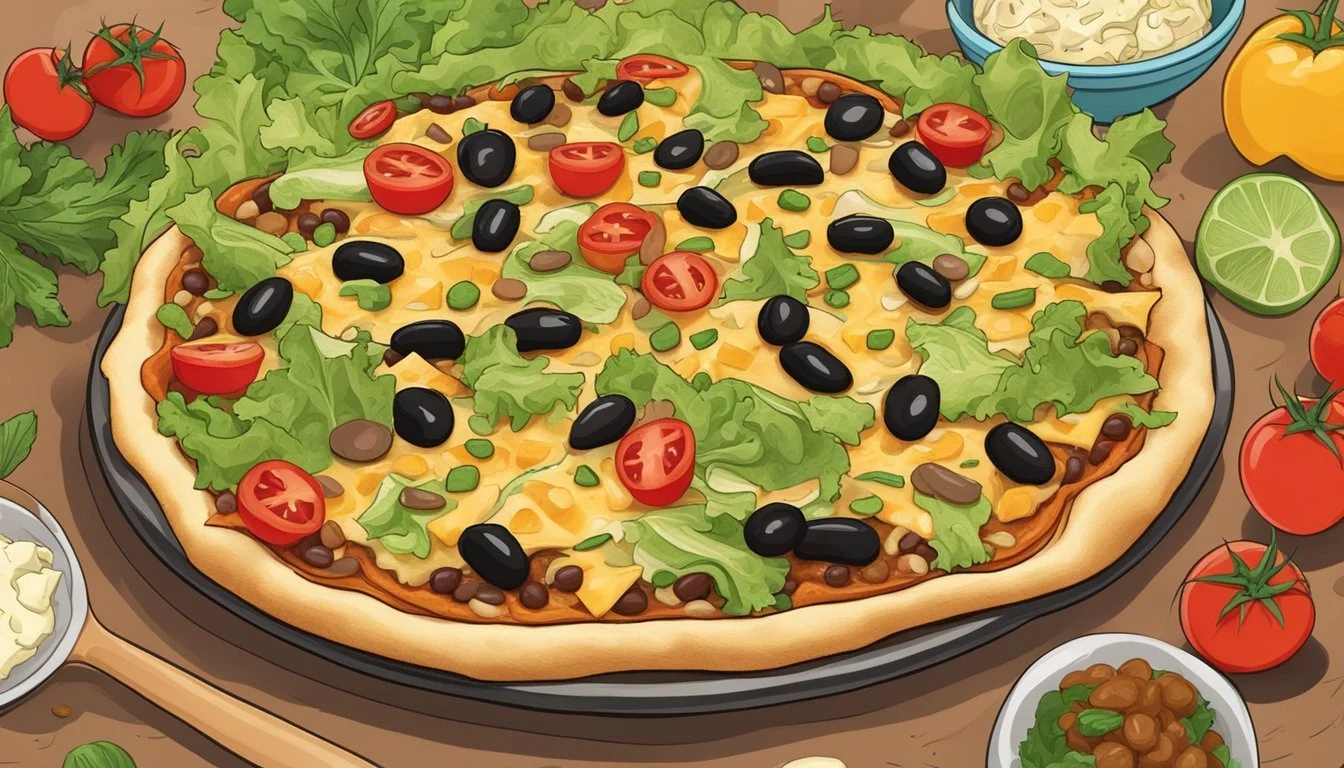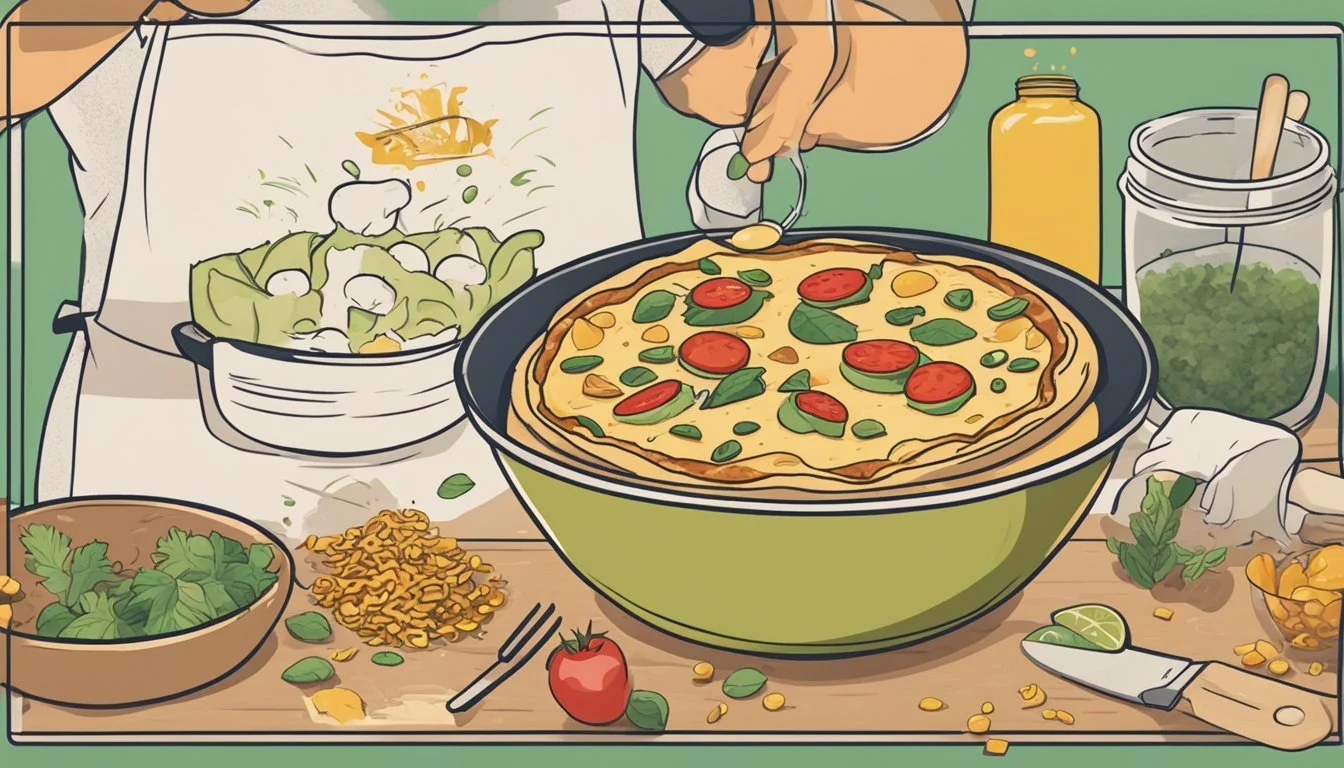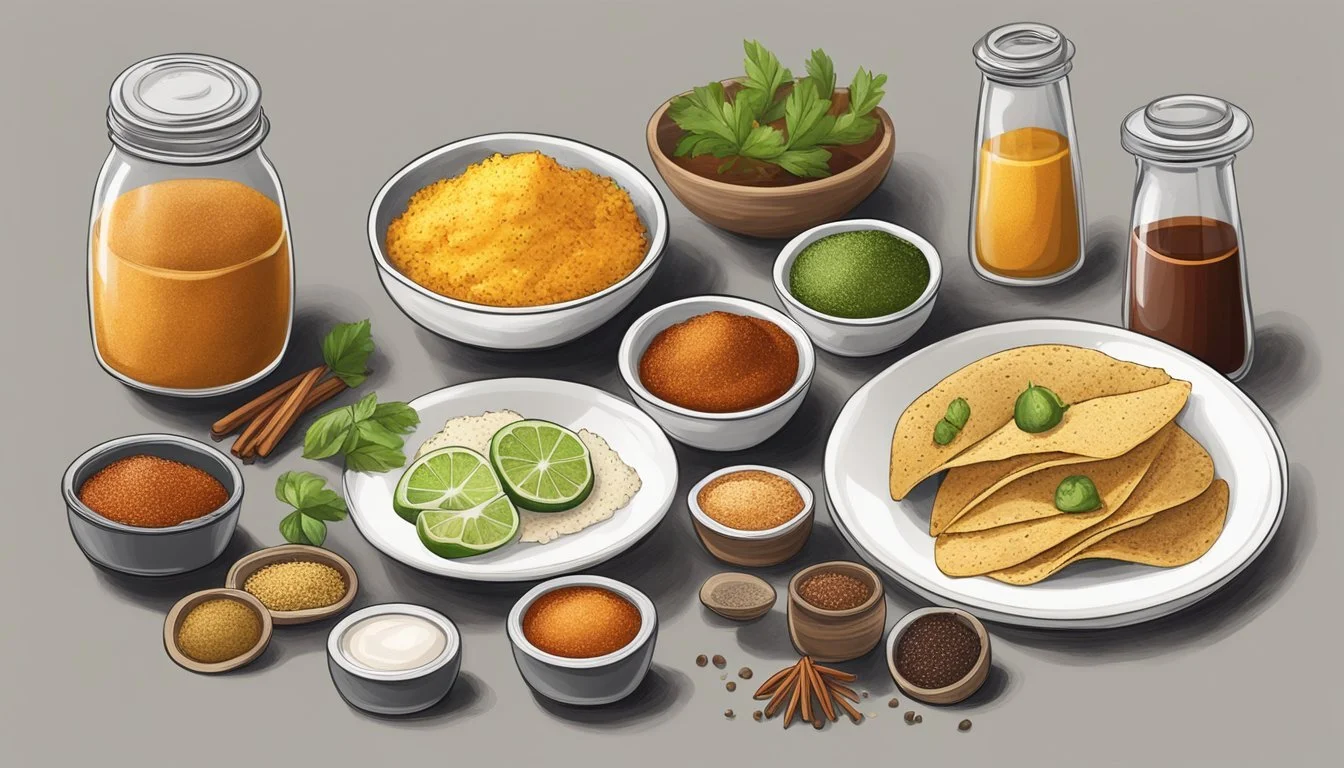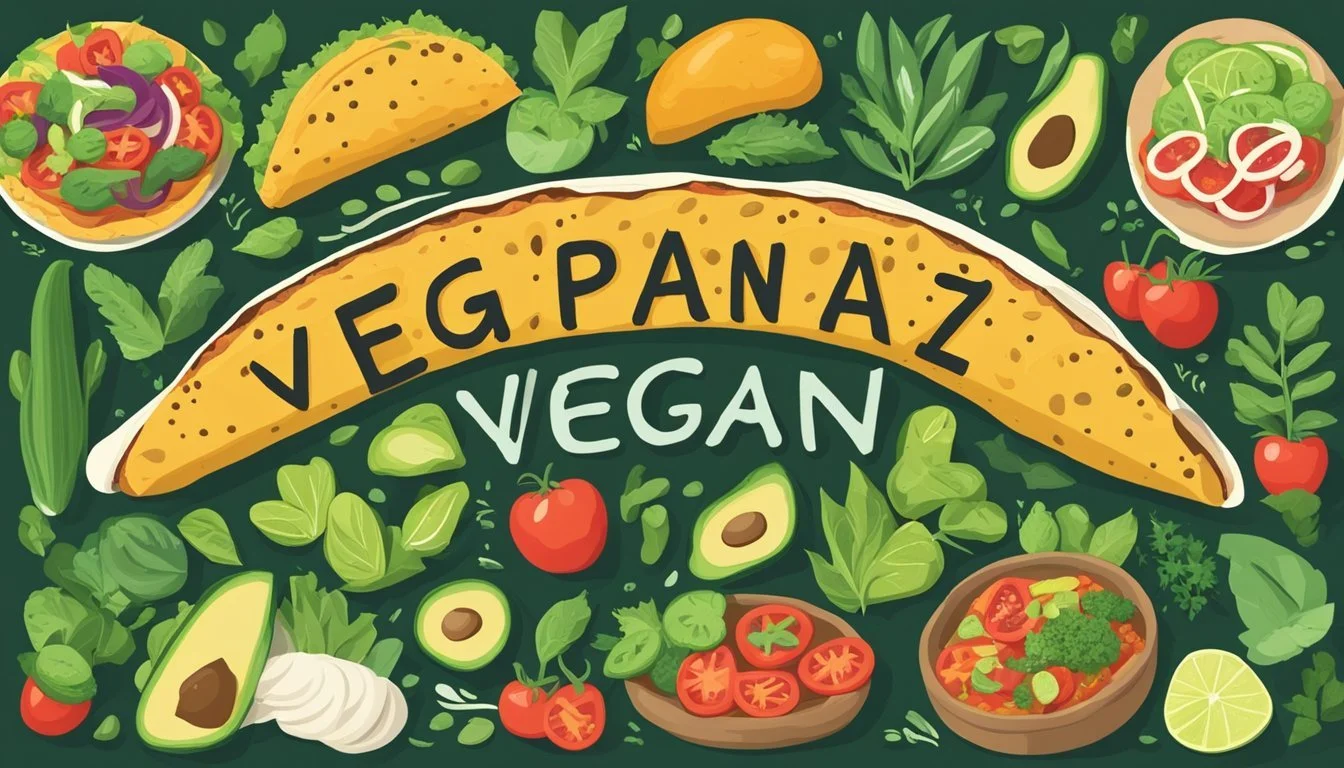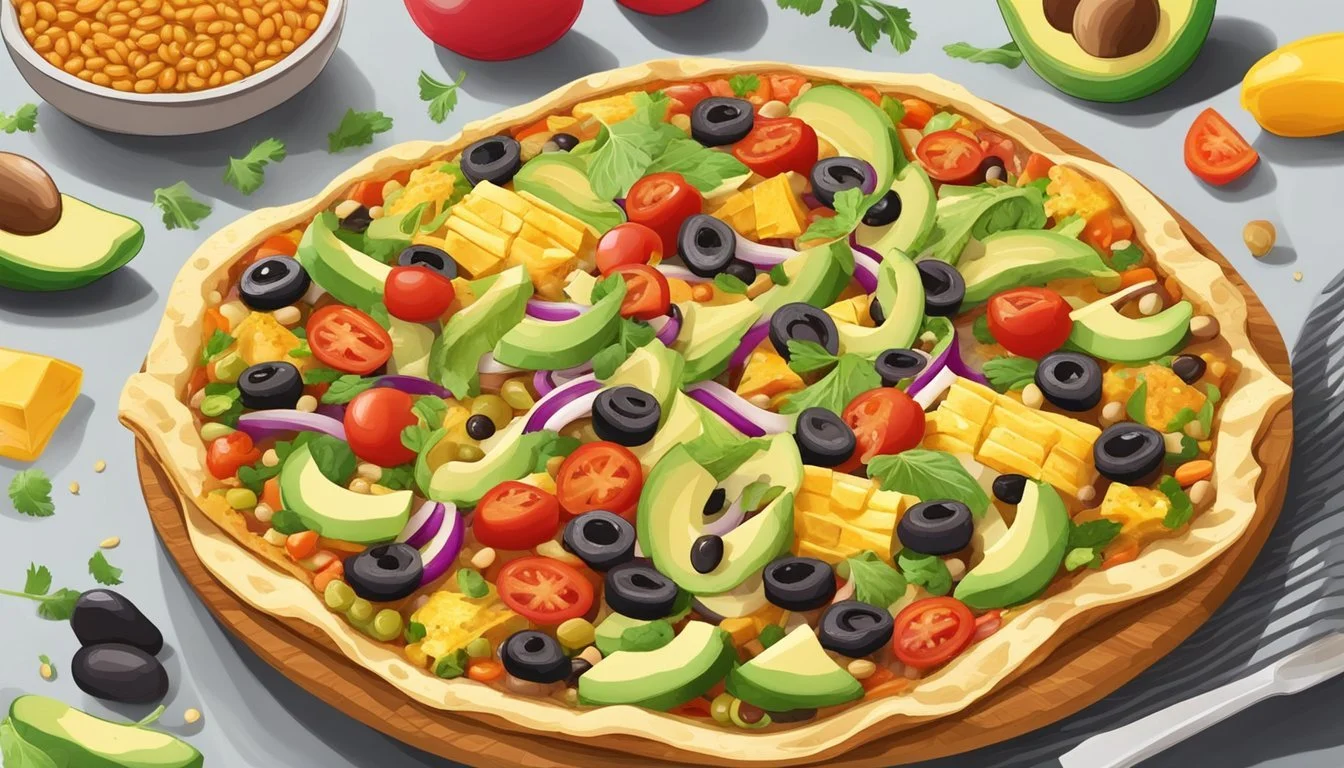Is Taco Pizza Vegan?
Unveiling the Truth About This Fusion Dish
Taco pizza, (What wine goes well with pizza?) a delightful fusion of Mexican and Italian cuisines, often raises the question of whether it can align with a vegan diet. This dish traditionally combines the flavorful toppings of tacos, such as spiced meat, cheese, lettuce, and tomatoes, with the classic crust of a pizza. However, its compatibility with veganism hinges on the ingredients used for the toppings as well as the base of the pizza itself.
For those following a vegan lifestyle, it is entirely feasible to enjoy a taco pizza by substituting animal-derived components with plant-based alternatives. Vegan versions of taco pizza might feature a crust made without butter or eggs, vegan cheeses, and meat substitutes such as lentils, walnuts or tofu seasoned with taco spices. Fresh vegetables commonly associated with tacos, like avocado, lettuce, and tomatoes, along with vegan sour cream and cheese, can be used to top the pizza after baking.
Restaurants and recipes catering to vegan diets are becoming increasingly inventive, showing that a taco pizza can be both vegan and delicious without compromising the essence of what makes the dish appealing. The key lies in the careful selection of ingredients that respect vegan principles while also delivering the zest and texture expected of a taco pizza.
What Is Taco Pizza?
Taco pizza merges the flavors of traditional tacos with the convenience and form factor of pizza, offering a unique culinary experience. The dish incorporates typical taco ingredients as toppings on a pizza crust instead of being encased in a taco shell.
Taco Pizza Ingredients
Taco pizza includes a pizza dough base, which then receives a variety of taco-inspired toppings. Common ingredients are taco meat, which can range from seasoned beef to chicken, lettuce, tomatoes, and cheese, usually cheddar or a Mexican blend. It might also be topped with sour cream, olives, and salsa.
Traditional Taco Pizza Vs. Vegan Taco Pizza
Traditional taco pizza and vegan taco pizza differ primarily in their choice of cheese and meat. In a traditional taco pizza, one would use standard dairy-based cheese and ground meat seasoned with taco spices.
Traditional Cheese: Cheddar, Mexican blend, or another favorite.
Taco Meat: Ground beef, chicken, or pork.
For a vegan taco pizza, ingredients are substituted with plant-based alternatives:
Vegan Cheese: Dairy-free cheese often made from nuts, soy, or other plant proteins.
Vegan Taco Meat: Could be made from lentils, tofu, tempeh, or walnut mix, seasoned similar to traditional taco filling.
Vegan Sour Cream: A non-dairy alternative to traditional sour cream, often made from cashews or soy, might be spread on the crust. Additional vegan toppings such as avocado bring creaminess to the dish. The consistency and taste aim to replicate the original as closely as possible while adhering to vegan dietary restrictions. Vegan taco pizzas offer an inclusive option while capturing the essence of the taco experience in pizza form.
Understanding Veganism
In the context of food choices like taco pizza, veganism is characterized by plant-based ingredients that exclude all forms of animal exploitation and cruelty. This impacts the use of dairy, meat, and certain proteins traditionally found in pizza.
What Makes Food Vegan?
Foods are considered vegan if they do not contain animal products or by-products. This includes meat, dairy, eggs, and honey, as well as hidden ingredients like certain food colorings or gelatin. It’s critical to check the ingredients list for non-vegan additives when assessing a food's vegan status.
Vegan Pizza: A vegan pizza is made entirely without animal-derived ingredients. While traditional pizzas often rely on dairy-based cheese and meats for toppings, vegan pizzas must find plant-based alternatives.
Vegan Cheese: Essential for a vegan pizza, vegan cheese is often made from ingredients such as nuts (e.g., cashews or almonds), soy, or vegetable oils. These cheeses aim to replicate the melt and flavor of dairy cheese without using any animal products.
Healthy Options: Many consumers seek vegan pizza not only for ethical reasons but also for a healthier profile. As such, vegan pizzas often feature whole-food toppings like vegetables and incorporate whole grain doughs.
Protein Sources: Protein on a vegan pizza can come from sources like seitan, (What wine goes well with seitan?) tofu, tempeh, or beans. These provide essential amino acids and can mimic the texture and flavor of traditional pizza toppings.
Dairy-Free: By definition, all vegan foods are dairy-free. Vegan pizzas employ dairy-free cheese options and exclude other dairy products like butter in the crust or cream in sauces.
When considering veganism in the framework of taco pizza, it involves replacing traditional meat with plant-based proteins, ensuring that the crust, sauces, and toppings are all free of animal products, and opting for dairy-free cheese alternatives.
Creating Vegan Pizza Dough
Vegan pizza dough serves as the foundation for a delectable taco pizza, ensuring not only the absence of animal products but also the perfect texture and taste. Selecting the right ingredients and following precise baking techniques are paramount to achieve a successful homemade vegan dough.
Vegan Dough Ingredients
Flour: 2 cups of whole wheat flour for nutty flavor and added fiber
Yeast: 1 packet (approximately 2 ¼ teaspoons) to help the dough rise
Water: 1 cup lukewarm (around 98°F or 37°C), crucial for activating the yeast
Sweetener: 1 tablespoon of sugar or an alternative sweetener to feed the yeast
Oil: 2 tablespoons of olive oil for a tender crumb and moisture
Salt: 1 teaspoon for flavor enhancement
Steps to Make Vegan Dough
Yeast Activation: Dissolve the sweetener in the lukewarm water. Sprinkle the yeast on top, stir slightly, and let it sit for 5 minutes or until it foams—an indicator that the yeast is active.
Combining Dry Ingredients: In a large mixing bowl, whisk together the whole wheat flour and salt to ensure even distribution.
Wet into Dry: Make a well in the center of the dry ingredients and pour in the activated yeast mixture along with the olive oil.
Mixing and Kneading: Mix everything until a sticky dough forms. Then, on a lightly floured surface, knead the dough for about 5-10 minutes, until it's smooth and elastic.
Rising: Coat the mixed dough lightly with olive oil, place it in a bowl, and cover it with a clean kitchen towel. Allow it to rise in a warm, draft-free area until it doubles in size—typically around 1 hour.
Baking Prep: Preheat the oven to 450°F, which is hot enough to give the dough a crisp exterior. After it has risen, punch down the dough and shape it to the desired size on a baking sheet lined with oiled parchment paper.
By meticulously choosing vegan ingredients and adhering to these steps, one can easily prepare a homemade vegan pizza dough that's perfect as the base for a delicious taco pizza. The use of whole wheat flour not only contributes to a wholesome crust but also offers a hearty texture that pairs well with taco toppings.
Vegan Taco Toppings
Creating a vegan taco pizza involves selecting plant-based ingredients that align with vegan dietary practices, ensuring that toppings provide both flavor and texture comparable to traditional counterparts.
Vegan Cheese Alternatives
Vegan taco pizza often incorporates vegan cheese as a key topping. Available options include:
Shredded vegan cheeses: like those made from soy, nuts, or root vegetables.
Nutritional yeast: for a cheese-like flavor; sprinkle it over toppings for an umami kick.
Meat Substitutes for Vegan Taco Pizza
Vegan taco pizzas replace traditional meats with:
Tofu: crumbled and seasoned to mimic taco meat.
Lentil walnut meat: a savory mixture that offers a protein-rich substitute.
Additional Vegan Toppings
To complete a vegan taco pizza, add a variety of vegetables and legumes:
Beans: Black beans and kidney beans provide protein and fiber.
Vegetables: Lettuce, tomatoes, avocado, black olives, corn, and green onions offer crunch and freshness.
Sauces: Salsa can be spread on the base or drizzled on top for extra flavor.
Seasonings and Sauces
A taco pizza brings together the bold seasonings of a taco and the classic base of a pizza. The seasonings and sauces used on a vegan taco pizza are crucial to achieving an authentic flavor without the use of animal products.
Homemade Vegan Taco Seasoning
One can create a flavorful homemade vegan taco seasoning by combining cumin, oregano, chili powder, and garlic powder. These spices are often found in traditional taco seasonings and bring heat and depth to the dish. A typical blend may include:
1 tablespoon of chili powder
1 teaspoon of ground cumin
1 teaspoon of garlic powder
1 teaspoon of dried oregano
1/2 teaspoon of salt (or to taste)
It's important to mix these spices in the right proportions to ensure each slice of taco pizza is bursting with flavor.
Vegan Sauces for Taco Pizza
For sauces, one can spread a generous layer of salsa as the base on their pizza dough. Salsa varies in levels of heat, so selection should cater to individual spice preferences. Additionally, vegan sour cream can offer a cooling contrast to the spices when dolloped on top or used as a base layer.
Alternatives include taco sauce and hot sauce for extra heat, while a drizzle of olive oil can add a subtle richness. When choosing sauces, it's important to check labels to ensure they fit within vegan dietary restrictions, as some may contain hidden animal-derived ingredients.
Assembling and Baking the Pizza
In crafting a vegan taco pizza, the assembling of quality ingredients and precise baking play pivotal roles in ensuring a delectable and crispy outcome. The process is straightforward, focusing on a layer-by-layer approach and adhering to certain baking tips to yield the perfect crust.
Layering the Ingredients
A taco pizza thrives on the harmonious blend of its components, making the layering sequence important. Start with a pre-prepped or homemade pizza dough, spread it on an oiled baking sheet or pizza stone to create a crispier base. Preheat the oven to the appropriate temperature, often between 385°F and 450°F, depending on the recipe specifics.
First, brush the pizza dough lightly with oil before pre-baking it for a short period to achieve a slight crispiness. Here's the typical layering sequence for a vegan taco pizza:
Base Layer: Apply a thin layer of salsa or tomato sauce. This acts as the glue for the toppings.
Protein: Add your choice of meatless toppings, such as spicy tofu or lentil walnut 'meat.'
Vegan Cheese: Scatter a generous amount of shredded vegan cheese, ensuring even coverage.
Vegetables: Top with diced avocado, tomatoes, lettuce, corn, and kidney beans.
Each component must be evenly distributed to ensure every slice is laden with flavor.
Baking Tips for the Perfect Crust
Achieving the perfect crust is crucial for the ultimate vegan taco pizza.
Temperature: An oven preheated to the right temperature is essential. For a crispy crust, bake at a high temperature—usually above 385°F.
Pre-Baking: Pre-bake the crust for about 10 minutes to a golden crisp before adding the toppings, which prevents it from becoming soggy.
Pizza Stone: For an extra crispy crust, use a pizza stone instead of a baking sheet. Heat the stone in the oven before placing the pizza dough on top.
Observation: Keep a watchful eye on the pizza as it bakes. Baking times can vary, so look for the moment when the edges brown slightly, and the vegan cheese has melted.
Once baked, the pizza should feature a crispy crust with melted cheese and warm, aromatic toppings. Slice and serve immediately for best enjoyment.
Nutritional Information
When analyzing the nutritional profile of vegan taco pizza, it is essential to consider both the calorie content and the balance of macro and micronutrients. This will provide a comprehensive understanding of the pizza's impact on one's diet.
Calorie Count of Vegan Taco Pizza
The calorie content of a vegan taco pizza can vary depending on the size and specific toppings used. However, a standard slice of vegan taco pizza typically ranges between 250 to 300 calories. The absence of dairy and meat products often results in a lower calorie count compared to traditional taco pizzas.
Macro and Micronutrients
Macronutrients:
Carbohydrates: Generally, a slice contains around 30 to 40 grams of carbohydrates, which serve as the body's primary energy source.
Fats: The fats in vegan taco pizza primarily come from plant-based sources like avocado or olive oil, contributing to an average of 10 to 15 grams per slice. Saturated fat is usually minimal.
Protein: Protein levels can be significant, especially when tofu or legumes are included, with each slice providing an estimated 10 to 20 grams.
Micronutrients: Vegan taco pizzas often include a variety of vegetables, which are excellent sources of vital micronutrients:
Fiber: An average slice can have up to 5 grams of dietary fiber.
Vitamins: These pizzas are typically high in vitamin C and vitamin A, due to ingredients like tomatoes and bell peppers.
Minerals: Essential minerals such as calcium, iron, and potassium are also present.
It's essential to note that while vegan taco pizza can be a healthy alternative, the exact nutritional content will depend on the specific ingredients and portion sizes.
Serving and Storage Suggestions
Vegan taco pizza is a versatile dish ideal for dinner or a party. Ensuring optimal freshness and taste involves proper serving and storage techniques.
How to Serve Vegan Taco Pizza
When serving vegan taco pizza, one should let the pizza cool slightly after baking to allow the toppings to set. It's typically garnished with fresh ingredients such as shredded lettuce, diced tomatoes, and refried beans, which can be added just before cutting the pizza into slices to maintain their texture. For a party setting, this pizza pairs beautifully with a variety of dips such as guacamole or salsa for added flavor.
Storing and Reheating Leftovers
To store leftovers, one should allow the pizza to cool completely before placing it in an airtight container. The pizza can be stored in the refrigerator for up to 2-3 days. For reheating, the oven is preferred to retain the crust's crispiness. Preheat the oven to 350°F (175°C) and warm the pizza for just a few minutes. It's important to avoid over-reheating, as this can dry out the pizza and cause the fresh toppings to wilt.
Customization Tips
Creating a vegan taco pizza offers flexibility and personalization to cater to various tastes and dietary needs. These tips can help ensure that everyone enjoys a delicious, tailor-made pizza experience.
Adapting the Recipe for Dietary Restrictions
For those looking to avoid gluten, gluten-free options can be easily incorporated into a vegan taco pizza. Crusts made from gluten-free flours or even cornmeal can provide a sturdy and flavorful base without the gluten. When selecting tortillas as an alternative crust, one should opt for gluten-free tortillas to accommodate sensitivities.
Gluten-Free Crust Options:
Pre-made gluten-free pizza dough: Available at most health food stores.
Cornmeal crust: Offers a unique texture and is inherently gluten-free.
Cauliflower crust: A low-carb option that also keeps the dish gluten-free.
Variations of Vegan Taco Pizza
Variety is the spice of life, and this extends to customizing toppings on a vegan taco pizza to suit individual palates. One might choose to sprinkle diced cherry tomatoes and spinach atop their pizza for a burst of freshness and color.
Topping Variations:
Fresh Veggies: Add cherry tomatoes, spinach, or any vegetable of choice.
Homemade Touch: Homemade salsa or cashew sour cream can elevate the flavor.
Cheese Options: Various vegan cheese alternatives can be used, including vegan cheddar or mozzarella shreds.
Bold Flavors: Include pickled jalapeños or red pepper flakes for an extra kick.
By considering these customization tips, one can effortlessly modify a vegan taco pizza to fit their taste preferences and dietary requirements while keeping the preparation process easy and homemade.
Final Thoughts
The vegan taco pizza merges the vibrancy of Mexican cuisine with the conscientious choices of a plant-based diet.
The Appeal of Vegan Taco Pizza
Vegan taco pizza offers a symphony of flavors that satisfy those seeking a main course that is both healthy and aligned with sustainability concerns. Consumers often express positive feedback on the flexibility this dish offers, allowing individuals to cater to their taste preferences while maintaining a vegan diet. Public star ratings frequently reflect this satisfaction, showing that a carefully crafted vegan taco pizza can stand on equal footing with traditional offerings when it comes to taste and enjoyment.
Flavor components typically feature seasoned meat alternatives, dairy-free cheese, and an assortment of vegetables, all contributing to a multi-layered taste experience. The dish is emblematic of the evolution of Mexican cuisine, adapting to modern dietary preferences without compromising on taste. The health aspect is significant, with a plant-based taco pizza providing nutritious ingredients without the high saturated fat content often associated with cheese and meat.
The consideration of sustainability adds to the appeal of vegan taco pizza, as plant-based options typically have a lower environmental impact than their animal-based counterparts. The positive environmental implications contribute to an enhanced dining experience for those who value ethical consumption.

